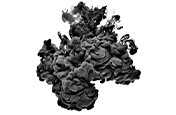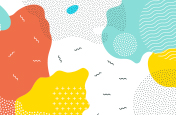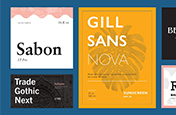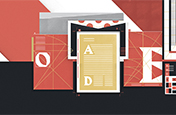How to become a brand designer
If you’re a creative with an eye for detail and artistic flair, then brand design could be the career for you.
In this guide, we’ll explore what a brand designer is and what the job entails. We’ll also look at the skill set and experience you’ll need for a career in brand design. So, whether you’re a novice or are looking to take the next step, read on to learn how to become a brand designer.

What is a brand designer?
A brand designer is a creative expert who helps shape a business’s brand identity. Brand specialists may create a certain ‘image’ for a start-up company or they may help an existing business redesign or refresh its current brand.
Those becoming brand designers often have backgrounds in creative disciplines such as graphic design, while others may be largely self-taught.
What does a brand designer do?
Brand designers are responsible for overseeing and ensuring a consistent image and messaging for a business. They deploy their creative skills to help convey company or client values, with the aim of promoting their products and services to relevant target audiences.
Key responsibilities.

If you’re considering becoming a brand designer, typical responsibilities include:
Working from client briefs
Brand specialists usually start with a client brief - or an internal one if working in-house - to familiarise themselves with the company’s values, goals and business environment.
From that, they’ll design a public image and brand message. They may also conduct further background research on the company, to help better understand their client.
Designing logos
A company’s logo is often the most distinctive part of its public image and the first thing prospective customers see. As a result, it’s important that it’s instantly recognisable to customers.
To be a successful brand designer, you’ll need to learn how to design a logo proficiently. In fact, it’s one of the key responsibilities of brand design.
Creating visuals
Shaping a company’s visual identity - such as colours, typography and photography - are another part of what you will do as a brand designer. These components help to set a tone that customers associate with the company, so building this aesthetic is what helps a brand’s products or services stand out among competitors.
Designing websites and apps
Today, most businesses use websites and apps to promote their products and services. The design and structure of these platforms help businesses to communicate the image, values and message of their company.
Brand designers are central to web and app design. Their job - working with web developers and UX designers - is to ensure brand messaging and tone is consistent across every platform. So, to be a brand designer, you want to know the basics of how to design for apps.
Feeding into social media promotions
Social media marketing is another way for businesses to promote themselves to both existing and potential customers. Brand creatives often develop visuals and marketing materials to help a business expand its reach across social media channels.
Liaising with other teams and individuals
Businesses often have several creative teams dedicated to their branding. These can include graphic designers, web designers and copywriters.
Brand designers are responsible for co-ordinating with these teams to help create a consistent image for the company - and may also report into or work closely with creative directors and art directors.
Designing company merchandise
Brand specialists are sometimes responsible for creating the visuals for company merchandise. This can include clothing for employees, as well as branded products for customers.
Working hours and what to expect as a brand designer.

A brand designer typically works around 40 hours a week, though there may be times when you’ll be required to work additional hours to meet project deadlines.
- For agency workers, hours are often flexible.
- For freelancers, flexible working can allow for a better work-life balance.
However, freelance design work can be trickier to maintain - especially for novices. It’s often the case that those with smaller portfolios take on less freelance work as those with experience. So, when becoming a brand designer, you may not be able to rely solely on your freelance hours to begin with.
How much does a brand designer make?
Brand designers can earn an average of around £38,000 in the UK. Of course, it’s important to remember that salaries are often dependant upon experience and location and can also vary from company to company.
Here’s a rough indication of how much you can expect to earn at each level, according to industry network Creativepool(1):
- Graduate Brand Designer: £15,000 to £20,000
- Junior Brand Designer: £20,000 to £28,000
- Experienced Brand Designer: £25,000 to £35,000
- Senior Brand Designer: £35,000 to £55,000
Freelance designers at mid-to-high level can earn between £200 to £400 a day. That said, this will depend on the rates you charge and the work you take on.
Guidance on how to become a brand designer
Although many brand designers often have background experience in creative fields, such as graphic or web design, there’s no single path to becoming one. The key thing is to have a genuine passion for creativity - though you’ll also need to be proficient with the latest digital design software tools.
Naturally, there are certain skills and experience that will provide you with a solid foundation to help break into the industry.
Qualifications
Brand design education at school and college
If you’re still at school, you may decide to choose design-related subjects - such as GCSE art or an NCFE Level 1/2 Technical Award in Graphic Design or a related subject. Though such courses are designed primarily for young people aged 14 to 16, you can also study them at an older age(2).
Later, if you’re planning to go to university, you’ll need to obtain the UCAS points required by your chosen course. You have two options:
- A-levels, i.e. in Graphic Design or related subjects like Fine Art or Design Technology. Entry requirements: at least five GCSEs at grades 9 to 4/A* to C/ at least grade 6 in the specific subject(s) you want to study(3).
- BTEC Level 3 Diploma in Art and Design or other related subjects such as Creative Practices(4). Entry requirements: Any grade 4 GCSE Art and Design or grade 4 GCSE Technology(5).
Brand design education at university
People who become a brand designer have often attended university. Undergraduate degrees specifically in brand design aren’t really a thing. Relevant subjects include Visual Communication, Graphic Branding and Identity and broader subjects like Graphic Design.
Entry requirements are generally 3 Bs at A-level or a BTEC Level 3 Diploma(6).
From there, you may also choose to study for a masters. At MA level, you can find courses specifically in brand design.
(1) - Job Description - Branding Designer (creativepool.com)
(2) - ncfe.org.uk/qualification-search/qualification-detail/ncfe-level-12-technical-award-in-graphic-design-1723
(3) - ucas.com/post-16-qualifications/qualifications-you-can-take/levels
(4) - arts.ac.uk/partnerships/ual-awarding-body/qualifications/art-and-design/ual-level-3-diploma-and-extended-diploma-in-creative-practice-art-design-and-communication
(5) - nationalcareers.service.gov.uk/find-a-course/details?courseId=be387f93-b6de-454c-b779-5d23c63245ee&runId=72d10cf9-0cff-4d89-880b-3d1136e18021&searchTerm=itq%20level%203&town=&courseType=[%22%22]&courseHours=[%22%22]&courseStudyTime=[%22%22]&startDate=&distance=&filtera=False&page=653&orderByValue=Relevance&co-ordinates=&campaignCode=&qualificationLevels=
(6) - ucas.com/explore/subjects/graphic-design#subjects-its-useful-to-have-studied-firstd
Skills

While having a degree can be appealing to prospective employers, you’ll also need to possess some of the necessary core skills. These include a combination of technical (hard) and personal (soft) skills.
Hard skills
- Design software. Much of your job will include creating visual and textual content or concepts for clients. Therefore, a brand designer should have experience working with various digital design tools such as Adobe Illustrator, InDesign and Photoshop.
- Typography. The right font or typeface can set the tone and convey a compelling message for the brand, while the wrong typography can be confusing, hard to read and look unprofessional. Knowing how to use typography for look and legibility matters if you want to be a brand designer.
- Design principles. A strong understanding of basic design principles is essential for any brand designer. You’ll need to know how to bring your creative visions to life through colour, text and images, as well as how to create visually appealing and well-structured designs.
- Colour theory. Speaking of which, colour theory is a collection of rules and guidelines designers use to communicate with customers. It helps dictate how to combine colours to create harmonious designs. You can learn how to create colour patterns and explore different colour themes with Adobe Colour, which can be mastered within Adobe Illustrator.
- Branding. The clue’s in the name. Branding is a crucial skill for brand designers to master. Key elements of crafting a strong brand image include everything from researching the marketplace and establishing where your client sits within their industry, to defining brand guidelines and creating a consistent style guide.
- Social media. Many businesses use social media as a core part of their marketing strategy. Expertise in popular platforms - from the visual elements of a LinkedIn post to attention-grabbing reels on TikTok - can help you to establish a powerful online presence for your client.
Soft skills
- Creativity. A creative individual will be able to take core, sometimes intangible, business concepts and transform them into effective branding and visuals. Creativity is a key skill when considering what it takes to be a brand designer.
- Leadership and communication skills. Brand designers often work closely with other creative teams. Therefore, the ability to co-ordinate and manage other team members is important to ensuring projects go smoothly.
- Time management. You’ll often be working to tight deadlines throughout the design process, so you’ll need to be able to manage your time effectively and thrive when working on multiple projects at the same time.
Top tips on how to become a brand designer.

Brand designer career prospects and other useful information.
How in demand are brand designers? What are the job prospects like?
Every business needs effective branding - whether that’s crafting a complete visual identity or pulling together a well-designed website. Brand designers are, therefore, well sought after.
However, as with most creative fields, the job market tends to be highly competitive - so standing out with experience and a strong portfolio will count.
Who are the key employers?
Brand design has become an integral part of modern-day business structures. You’ll often find many creative marketing agencies and companies looking to deploy experts in this field.
Freelancing is also a popular option, as it gives you the flexibility to set your own working hours and hand pick the clients you work for.
What are the pros and cons of this career?
Becoming a brand designer can be a well-paid and rewarding career choice. However, just like all creative disciplines, there are things to consider before you step into the role:
Benefits:
- Provides the opportunity to freelance
- Highly creative role
- High demand for work
- Fulfilling career
Challenges:
- Working to tight deadlines
- Hours can be long
- You’ll need to be proficient with industry-standard digital design tools
- You’ll need to keep up to date with the latest design trends
Master brand design with Photoshop
Discover how to create eye-catching designs on logos and help build up your professional portfolio with Adobe Photoshop.
Brand Designer: FAQs
How long does it take to become a brand designer?
A typical university course in brand design or a related field, such as graphic design, can take between three to four years to complete. An online brand design course or certification can range anywhere from a few weeks to a few months - though it may take a lot longer to develop your professional skills and a portfolio.
Once you have acquired the necessary skills and knowledge and gained valuable hands-on-experience, you can start looking for work and keeping in touch to prospective clients.
What does it take to become a brand designer?
To be brand designer, it takes a combination of natural ability, learnt skills, qualifications and experience. For example, it’s likely you’ll be creative and visual by personality type, but you’ll also need to develop skills in graphic design and branding and to become proficient with industry standard software and tech.
Being able to work under pressure, multi-task and confidently present to clients are also important.
How much can you make as a logo designer?
Specialist logo designers can often make around £35,000 on average in the UK, working as part of a wider creative or graphic design agency. However, some experienced professionals working for top brands can earn a lot more. Senior brand designers, who often create logos as part of their day-to-day role, can command salaries of up to £55,000.
What is the difference between a graphic designer and a brand designer?
The main difference between a graphic designer and a brand designer is that a brand designer focuses on creating the visual identity for a brand as a whole, whereas a graphic designer creates visuals for specific marketing and communication needs.
What does a brand identity designer do?
A brand identity designer does similar work to a brand designer and both terms are often used interchangeably. Brand identity design is, however, a type of brand design that’s more focused on user experience or UX. For example, bringing consistent branding to the various touchpoints on your customer journeys via buttons, icons, menus and other components. You would likely work as the brand specialist on collaborative projects with UX designers and writers.
How do I become a brand identity designer?
To become a brand identity designer, you would follow a similar career path to a brand designer in terms of your skills and experience and the degree courses you would choose. But you would also want experience in and understanding of user experience, generally known as UX design.
So, you may qualify as a brand designer and then complete further training or on-the-job experience to specialise in brand identity design.
You might also be interested in…
Understanding black and white as colours.
Investigate the science of colours and see what sets black and white apart.
Learn about the versatility of this file format and discover how to use it in your design work.
Picking the right font: Serif vs. sans serif.
Choosing between serif or sans serif fonts means considering user experience, attitude and history.
Explore inspiration to help fuel your logo ideas.
Dive into the technical and aesthetic concerns of distilling a brand into a symbol.



